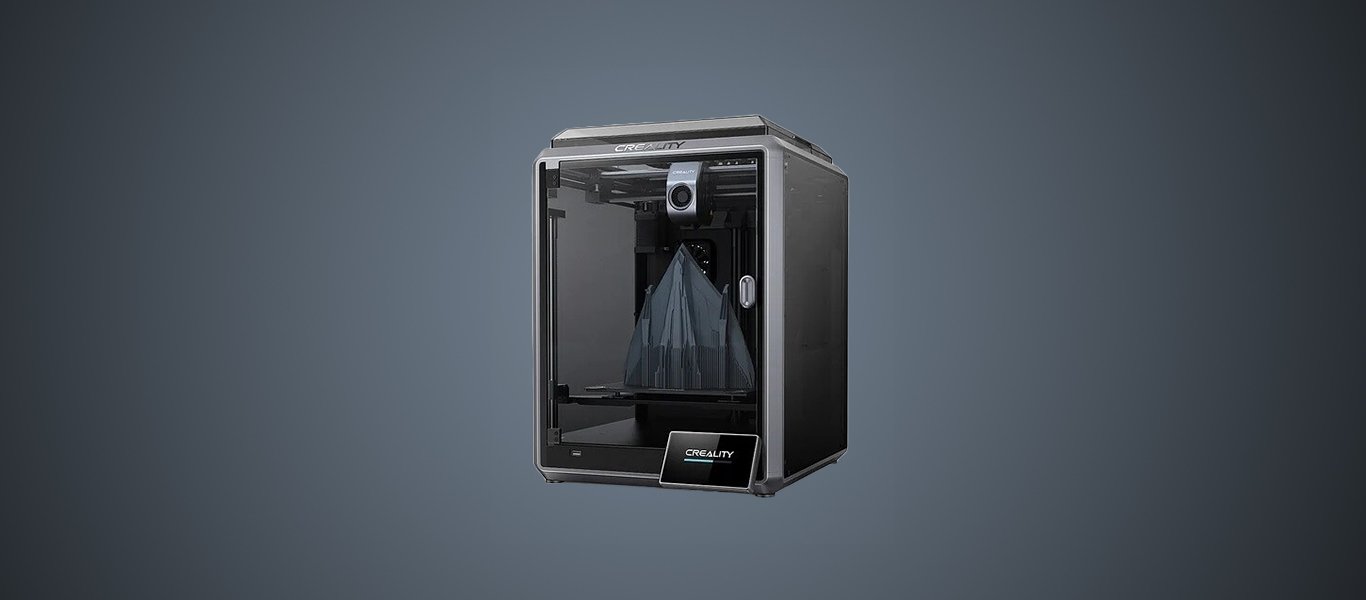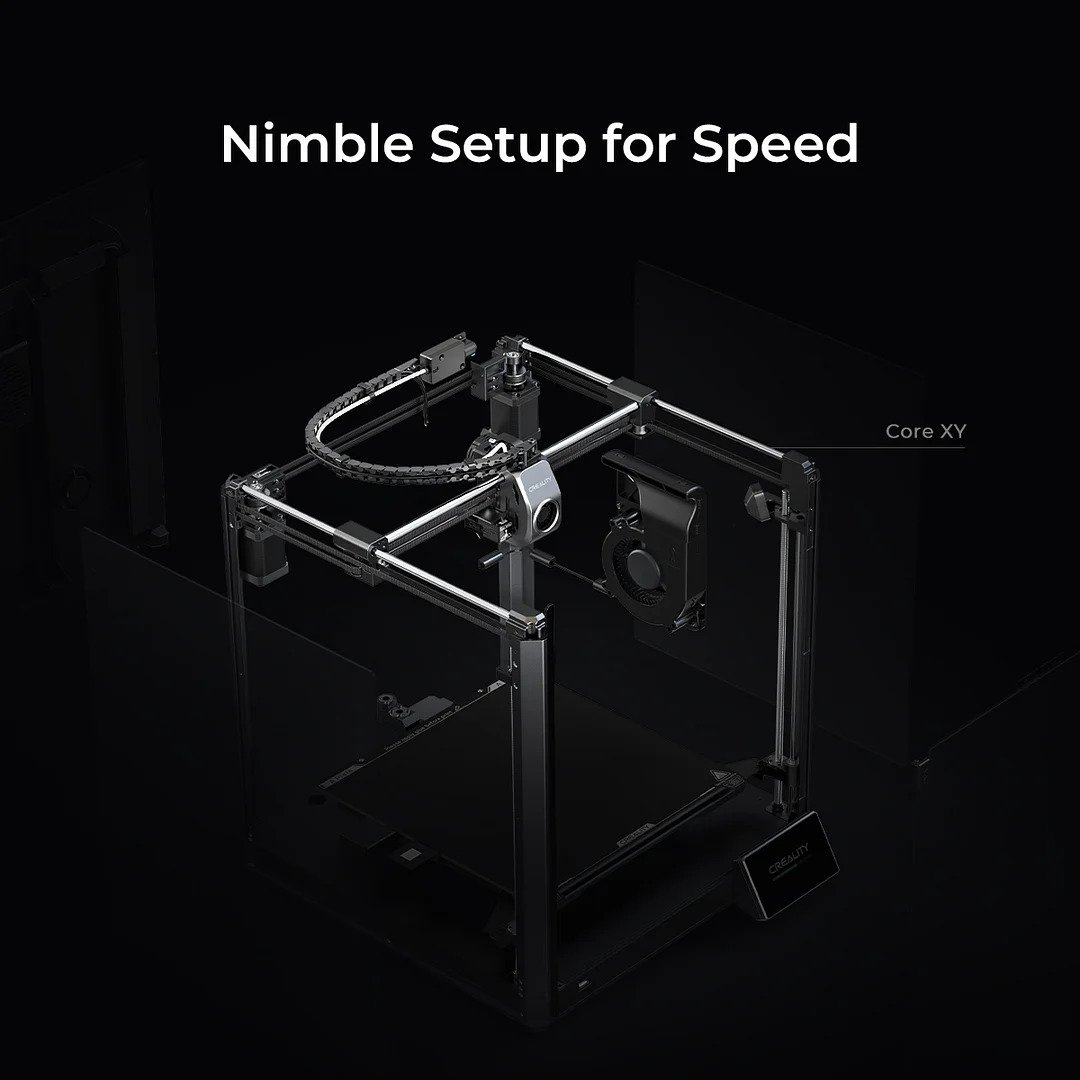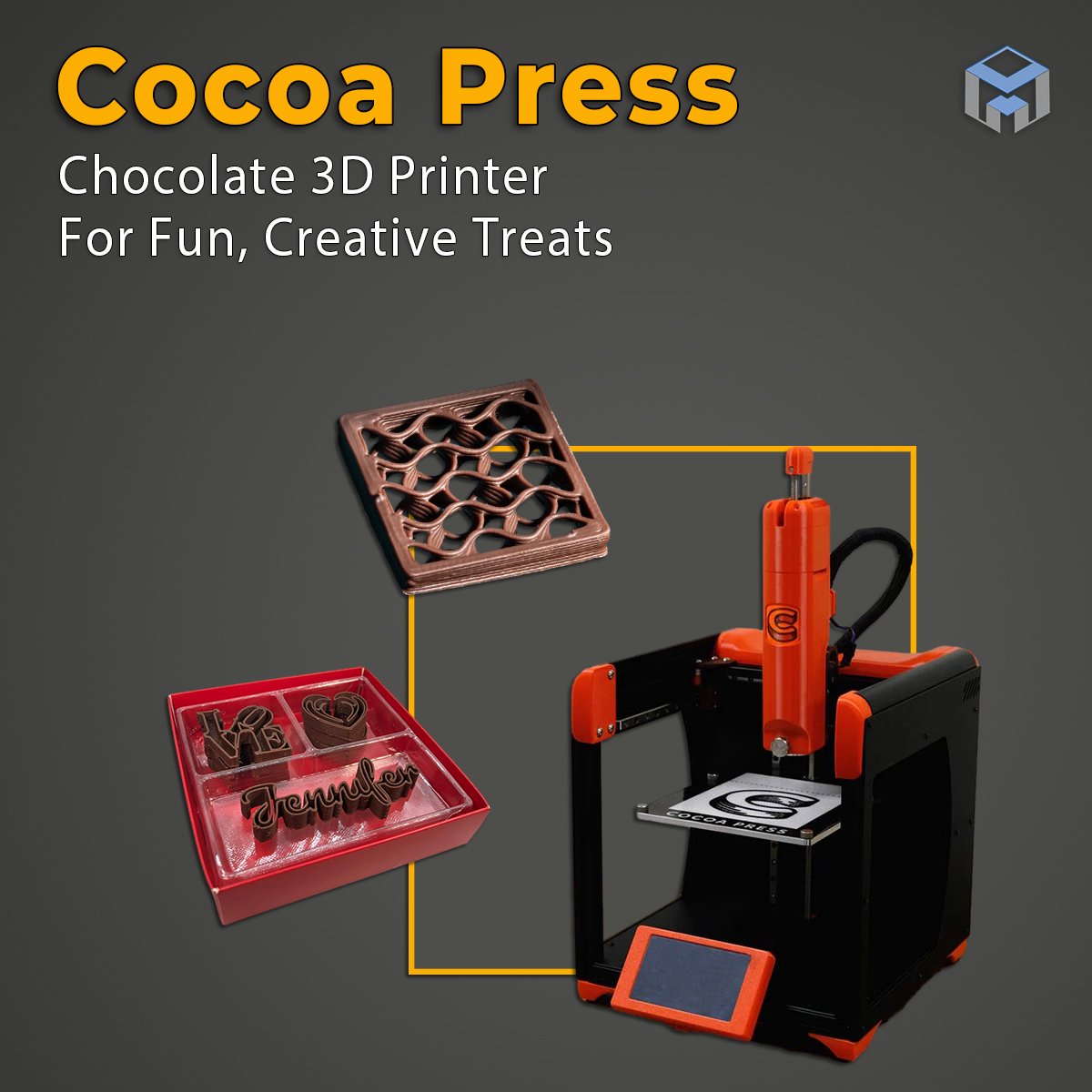Creality K1: A New Era of Speed and Smarts in 3D Printing
Creality, a well-known player in the ever-changing world of 3D printing, has entered the ranks of premium printers with their latest addition, the K1 series. With these printers, Creality has responded to the evolving demands of the user base by incorporating essential features that have become the norm in the industry. We’ll take a look at the K1 and K1 Max and see if it lives up to customer expectations.
Creality: Pioneering the 3D Printing Landscape
Since its inception, Creality has consistently been a trailblazer in the 3D printing industry. The company's progressive business strategies and the development of a robust 3D printing ecosystem have resonated with a diverse array of customers, catering to their distinct needs. This approach has led to Creality's dominant position in the market, particularly in the consumer-grade 3D printer segment under $2,500.
Creality's market share leadership is further substantiated by their performance in 2022, where they reported a year-on-year growth of 14% in the first half and 10% in the second half of the year. This surge was driven by the launch of several flagship products, including the Ender-5 S1, Sonic Pad, Sermoon D3, and the upgraded Ender-3 S1 and Neo series. These additions have not only amplified Creality's brand visibility but have also instilled confidence in users regarding the quality and performance of Creality products.
K1 Series: A Quantum Leap In 3D Printing
On April 9, 2023, Creality announced the K1 and K1 Max printers, setting a new standard in the realm of 3D printing. Starting at $599, the K1 series boasts a default speed of 600mm/s, enabling it to print a Benchy - a benchmark model used in 3D printing - in a record 13 minutes. This is a significant step forward, signaling Creality's commitment to enhancing speed and efficiency in the 3D printing process.
The K1 series is also characterized by its smart features, powered by the Creality OS. This operating system provides a user-friendly interface and facilitates data synchronization and command execution with PCs, smartphones, the Cloud, and additional modules. It is driven by a dual-core 1.2GHz CPU, which ensures smooth high-speed printing. Additionally, the 8GB ROM can store up to 400 model files, supporting quick writing and reading, and offering users the convenience of Wi-Fi connectivity for effortless control.
The access and ease of use are what make the K1 so special. As the industry is changing with customers expecting a more user-friendly and automated 3D printing experience, Creality has changed with it by shifting focus to providing a printer that provides high-quality results with a low level of entry. This opens up the market to a new batch of customers, the ones who care more about the printed object and not just the process of printing. This is definitely something we will see more of as new technology to make 3d printing even easier becomes readily available.
K1 or K1 Max
Creality is offering two models of their newest flagship printer: the K1 and K1 Max.
The K1 Max is the bigger version, with a build volume of 300x300x300. It includes all of the newest features like Lidar and AI tech. Priced at $999.
The K1 has a build volume of 220x220x250 and does not include Lidar or AI assistance. The Creality website lists these features as ‘optional’ so you might be able to buy them separately and add them yourself. The K1 is priced at $599.
| Feature | K1 | K1 Max |
|---|---|---|
| Price | $599 | $999 |
| Build Volume | 220x220x250 mm | 300x300x300 mm |
| Printer Dimensions | 355x355x480 mm | 435x462x526 mm |
| Filament Diameter | 1.75 mm | 1.75 mm |
| Lidar | Optional | Yes |
| AI Assistance | Optional | Yes |
| Max. Tool Head Speed | 600 mm/s | 600 mm/s |
| Max. Tool Head Accel. | 20,000 mm/s² | 20,000 mm/s² |
| Max. Hotend Flow | 32 mm³/s | 32 mm³/s |
What Sets The K1 Apart?
The K1 stands out for its advanced technological features. For instance, the AI-powered LIDAR sensor enables auto-calibration. This feature scans a few printed lines at the beginning of each print to calibrate the flow rate and pressure advance value according to the specific filament in use. This ensures optimal print quality and precision.
While the calibration is effective 90% of the time, some factors like dark or transparent filaments and textured printing plates may affect the LIDAR's accuracy. However, manual fine-tuning of the flow rate for the particular filament is a simple task, and the adjusted value can be saved in the slicer for future use.
The lightweight toolhead and high-flow hotend are 2 of the key ingredients needed for speed with Creality claiming a 600 mm/s print speed. With 20,000 mm/s acceleration, the K1 will print objects up to 12x faster than your basic Ender 3.
Automated bed-leveling makes sure every print starts with a perfect first layer. This is a crucial step in the printing process, especially on the longer prints where the small errors go unnoticed until the end of the print.
If you want to print fast then you must cool fast and Creality has solved this problem by adding a chamber mounted fan that blows air across the print area. This extra fan is what ensures a layer of plastic hardens before the next layer is extruded on top. This is important for appearance and dimensional accuracy.
The AI camera is another notable feature of the K1, being able to watch out for failures as well as providing real-time monitoring. This used to be an add-on that was set up through a webcam and 3rd party software but Creality has proved that it is too important not to make a stock feature.
Features Compared
| Feature | Description |
|---|---|
| High Speed Printing | Reaches 600 mm/s in only 0.03s based on 20,000 mm/s² acceleration |
| Lightweight Toolhead | Combining nimble CoreXY kinematics with a 190g printhead for less motion inertia |
| Max. 32mm³/s Flow | New ceramic heater encircles the entire hotend, heats to 200℃ in 40s and melts the filament instantly |
| Dual Hands-Free Auto Leveling | Automated bed leveling and bed mesh generation |
| Model Cooling by Dual Fans | A large fan on the printhead cools the model directly and a chamber-mounted 18W auxiliary fan adds extra cooling |
| Chamber Air Filter | Filtering out VOC's produced during the printing process |
| Creality Print 4.3 with Speed Genes | The latest self-developed slicer includes rich presets and streamlines the slicing process into 3 simple stages |
| Max Capacity, Efficient Use of Space | Boasts a 300x300x300mm large build volume, great for rapid prototyping or design verification |
| AI-assisted Carefree Printing | Features AI assistance for automated, 'hands-free' printing |
| AI LiDAR Takes Care of the First Layer | The 1 μm resolution LiDAR scanner gives a perfect first layer every time |
| AI Camera Keeps a Keen Watch | With failure detection, alerts when an error occurs, real-time monitoring, and creating time-lapses for sharing |
| Smart System, Unbridled Performance | Adopts the smart Creality OS, syncs data and commands with PC, phone, Cloud, and add-on modules |
| Intelligent Aid to Your Print Farm | Ability to monitor and control the printing from a PC or phone with Creality Print software or Creality Cloud |
| Filament Sensor | Real-time monitoring of filament supply, stopping a print on filament runout |
| Rigid Frame, Stable Quality | The frame is built with rigid die-cast aluminum alloy parts enabling steady printing at high speed |
Creality Official Store
Check out the K1 and K1 Max at the Creality Official Store:
Final Thoughts
I’ve seen Creality receive a lot of hate recently over the K1 which, I think, is fueled by misinformed opinions and I wanted to get a few things straight:
First, Creality isn’t providing any new innovations here with the K1. They are basically evolving with the market and providing what the market wants. This shift in the market and the user base can be contributed to the Bambu Lab X1. The X1 burst onto the scene from a widely successful Kickstarter, provided features not before seen on a 3D printer, and provided a user experience not yet seen either. Creality is playing catch-up right now as they have the resources to do so. I can see the X1 shutting down a lot of smaller 3D printer manufacturers, the ones unable to evolve quickly enough.
A company can either take a risk and innovate, or copy others and produce on a large scale. This is how the industry operates. This leads me to my next point:
Second, when people throw hate at Creality with statements like “they’re just copying Bambu”, they’re either unaware of the fact that all companies have copied and profited off of open source work or they are ignoring it. Bambu Lab is also guilty of this. 3D printers have mostly the same basic components and operate the same. Would you say that “Nissan copied Ford” or “Samsung copied Sony”?
I’m a firm believer that haters are a metric of success so I think Creality must be doing something right.























Get an in-depth look at the QIDI Tech Q1 Pro in our detailed review. Find out how this desktop 3D printer delivers engineering-grade filament printing with unmatched precision, speed, and versatility.